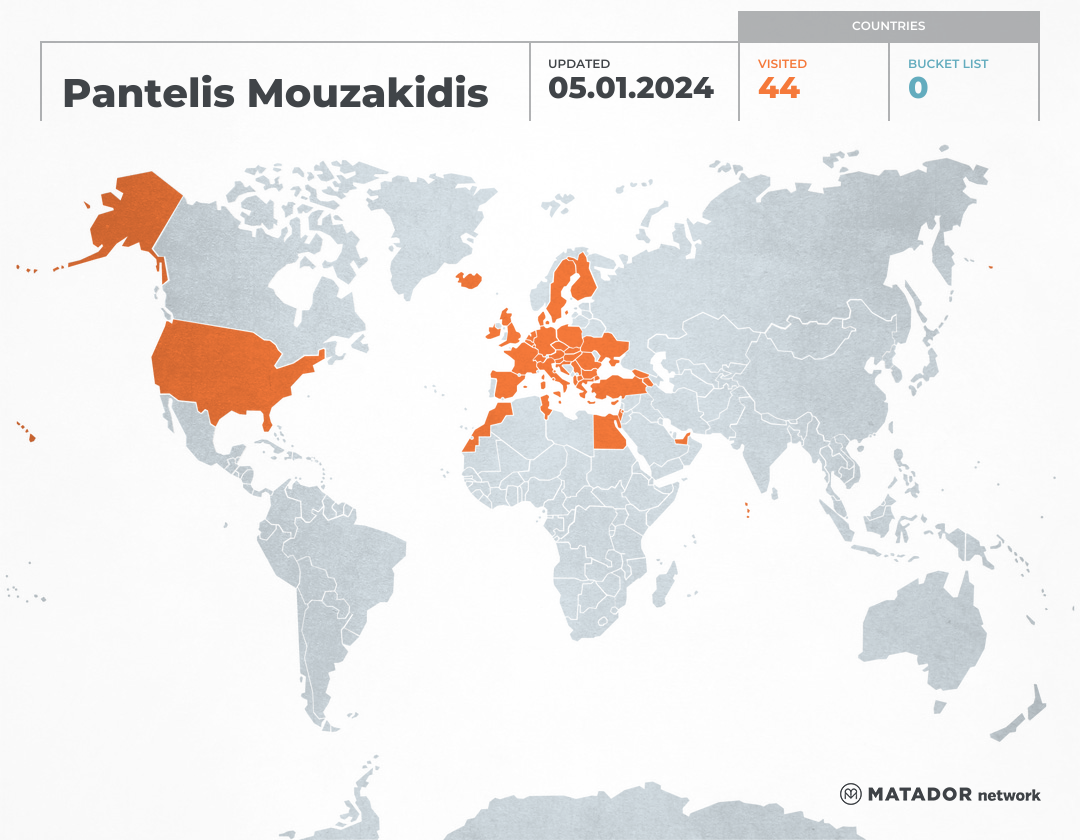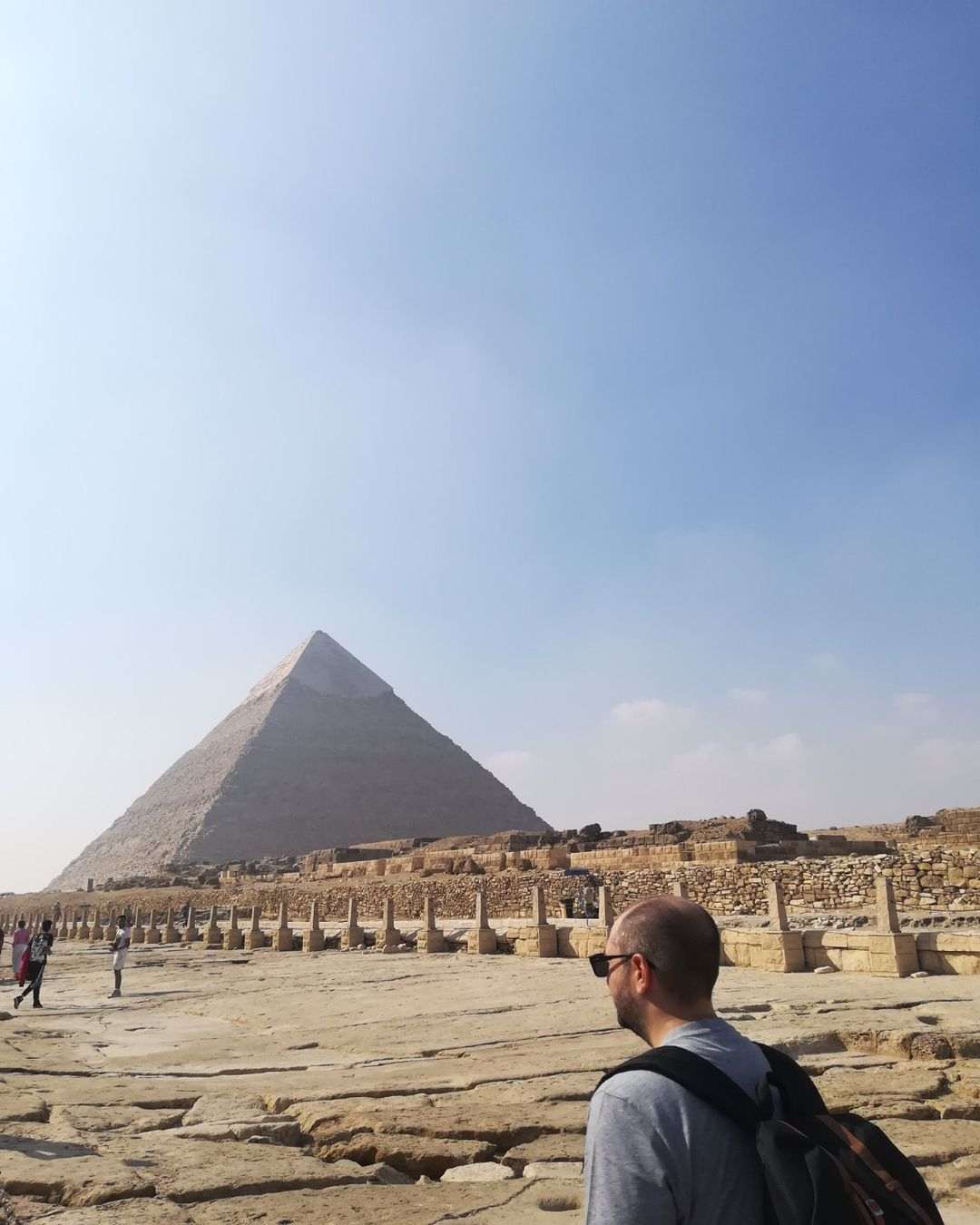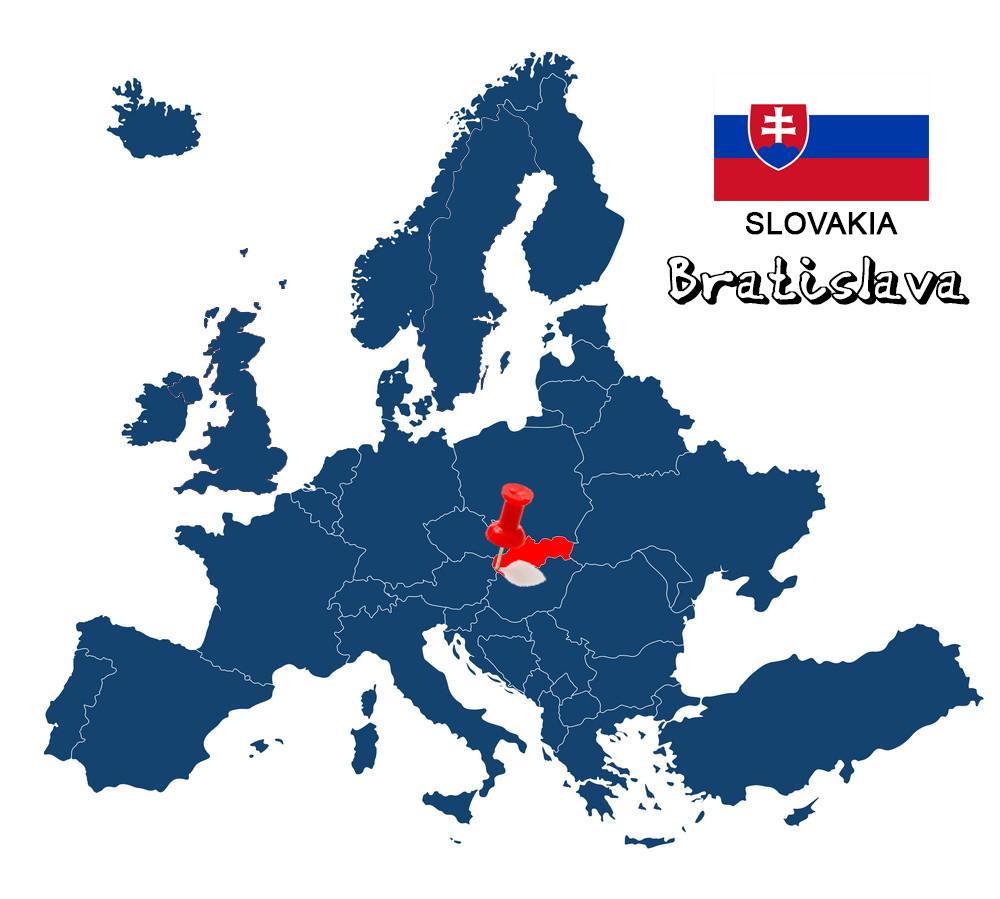
Let’s be honest,, Bratislava was not, nor will it ever be, the hottest destination in Europe. Touristically, it is in the shadow of its two neighbors, Vienna and Prague. Of course, a visit to the small but at the same time extremely charming Slovak capital will convince you otherwise. As it convinced me too, that it is the rough diamond of Central Europe! Less touristy, more economical and extremely charming, it is one of those cases where you see a lot more than what you initially expect.
A few words about the city
Bratislava is the capital of Slovakia and the largest city in the country, with its population reaching 432,801 inhabitants. It is located on the banks of the Danube River, on the border of Slovakia with Austria and Hungary, and relatively close to the border with the Czech Republic. This is the most densely populated metropolis of Central Europe and the only capital of a European state, located almost on the border with another state (Austria). The Carpathian Mountain range begins within the city area with mountains, small Carpathians (Male Karpaty). Impressive medieval buildings, cobbled streets, cheap and quality food and lively nightlife are some of the features of Bratislava, which will definitely not leave you indifferent. So I will try to present the city to you through my own eyes and share with you what I think someone who is visiting it for the first time should see.
Stare Mesto
The old town of Bratislava (Stare Mesto) is the most central point of the city and is certainly an attraction in itself. There you will find most of its historic buildings, along with many medieval towers and grand 20th century buildings. In the central square (Hlavné námestie) you will first admire the Old City Hall (Stará Radnica), a complex of three buildings from the 14th and 15th centuries, which today houses the city museum (Múzeum farmácie- lekareň U červenho raka). Then, between the central square and the city hall is one of the most charming buildings in the whole country, the majestic Archbishop's Palace (Primacialny palac). It was built from 1778 to 1781 for Archbishop József Batthyány, after the design of the architect Melchior Hefele. In fact, the treaty that ended the war of the Third Coalition was signed in the beautiful hall of mirrors, while today it serves as the seat of the Mayor of the city.
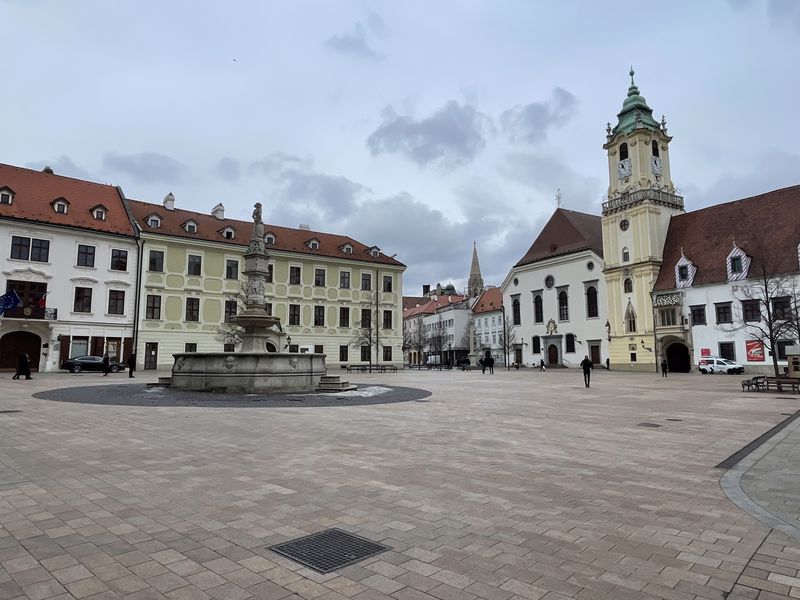
Bronze Statues
Scattered in the old town and around the central square you will find some bronze statuettes, which are an attraction for tourists and locals. First and foremost is “Cumil” or “Man at work”, a worker who emerges smiling from a sewer and watches the world go by. Equally popular is the statue of Napoleon's defeated soldier (Napoleonský vojak), resting on a bench. It's also worth taking a photo with the statue of Schöne Náci, which takes your hat off. This guy was a famous character in Bratislava in the middle of the 20th century, who made his living by playing various tricks on passers-by. Finally, don't miss the Statue of the City Guard, the Statue of Saint Elisabeth of Hungary, that of Hans Christian Andersen and Medusa.

Michalská Brána
A little north of Bratislava's central square is Michael's Gate (Michalská Brána). It is the only one that survived the medieval fortification and is counted as one of the oldest buildings in the city. It was built around 1300 and today we see the result of the renovation of 1758, when the statue of Saint Michael with the dragon was placed on top of it. The tower of Michael's Gate today houses the weapons exhibition of the city museum, while it is the zero point, from where all kilometer distances are measured. Very close you will also find the narrowest house in Europe.
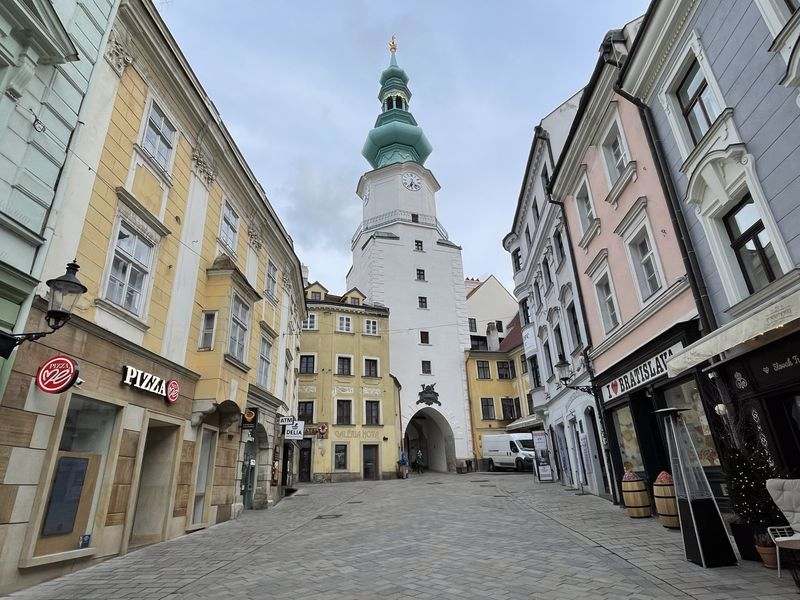
Bratislavsky hrad
The hallmark of the city is none other than the Bratislava castle (Bratislavsky hrad). It is a white square building, which occupies a strategic position, since it is located on the top of the hill of the small Carpathians overlooking the whole Danube. The history of the castle is, of course, very long, with the first traces of life in the area dating back to the pre-Christ era. The stone fortress was first built in the 10th century and lived moments of great glory, while naturally through the years it was subject to changes, additions and abstractions until the end of the 18th century where it gradually turned into ruins. But it was rebuilt after 1953, following its latest style, which was Baroque architecture. Its architectural style, imposing towers and Renaissance halls of the castle were the elements that made it the favorite residence of Maria Theresa. Here, after exploring its large courtyard with its Knightly statues and breathtaking panoramic views, you will invade its interior, where exhibitions of the Slovak National Museum (Slovenske narodne muzeum) are hosted. Admission costs 7e.
Katedrala svateho Martina
The Gothic Cathedral of St. Martin (Katedrala svateho Martina) is the largest and perhaps the most impressive church both in Bratislava, and in the whole of Slovakia. It was consecrated and officially opened in 1452, but it took another two centuries to complete its construction. From 1563 onwards it was used as a spot for the coronation of 11 kings of Hungary and has also housed the premiere of Beethoven's work, Missa Solemnis. The tower of the cathedral is 85 meters high and was originally part of the medieval fortification. At the top of the tower is a large gold crown, 300 pounds, which was placed in 1847 to remind of the importance of the cathedral and the fact that coronations of Kings have been made to it. The Shape of the temple symbolizes the crucifixion, with the triangular dome representing the body of Christ. The most famous artwork of the church is a statue of St. Martin and a beggar, from the 18th century. Admission is free.
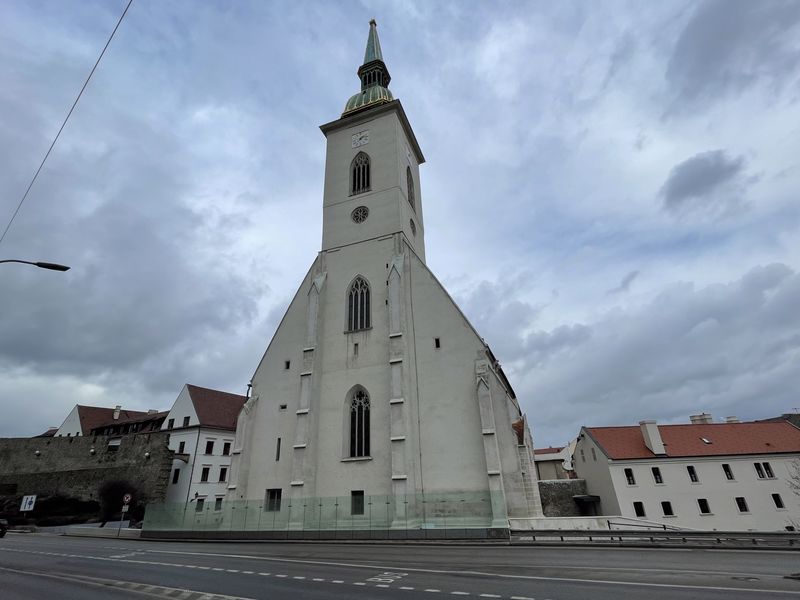
Modry Kostolik
If the Cathedral of St. Martin is the most impressive in the city, then the Church of St. Elizabeth is undoubtedly the most special. It is a Hungarian schismatic Catholic Church, located at the eastern end of the center of Bratislava and dedicated to Elizabeth of Hungary, daughter of Andrew II, King of Hungary between 1205 and 1235. The church is unofficially called "Little Blue Church" because of the characteristic color of the facade, mosaics and blue glass ceiling. It was built in 1908 and was originally part of the adjacent Lyceum and functioned as the chapel of the school. The architect was the Hungarian Odon Lechner, who gave the temple the Hungarian art nouveau style that dominates. And here the entrance is of course free.
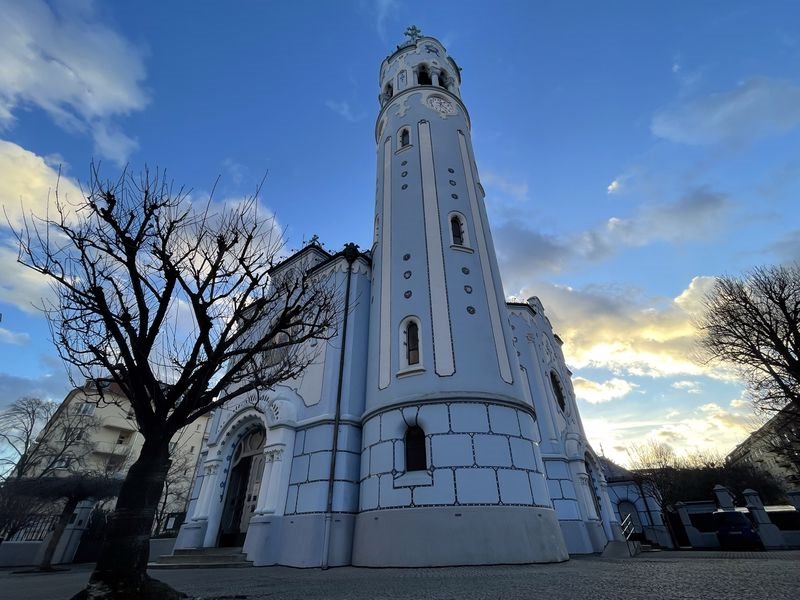
Novy Most
The new bridge (Novy Most) stretches over the Danube River and is one the longest bridges in Europe (303 meters). It was built between 1967 and 1972, demolishing a large part of the Old City and more specifically the Jewish quarter, but during the construction parts of the city's historic walls were discovered, which you can admire today. I suggest crossing the bridge from the old town to the opposite street to enjoy the incredible view of the Danube and sit down for a coffee or drink at the UFO. No, it's not a flying saucer; it's a obviously reminiscent restaurant of one. In addition to the restaurant-cafe the UFO, it has an observation deck, from where the view of the city is magnificent. Access to the lifts costs 7.40e.
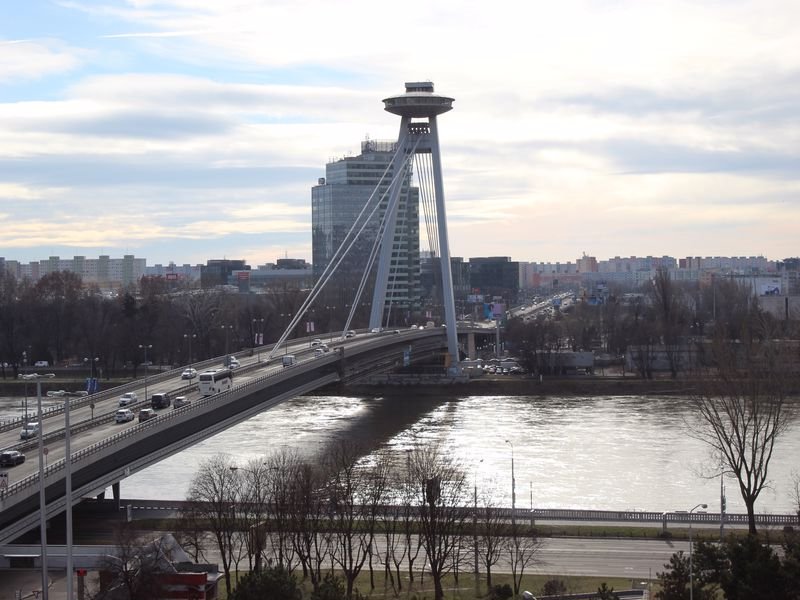
Slovenske Narodne Muzeum
The Slovak National Museum (Slovenske narodne muzeum) is the most significant institution focused on scientific research and cultural education in the field of museology in Slovakia. Its principles are connected with the effort of the Slovak nation for national emancipation and self-determination. Its headquarters (SNM-Prirodovedne muzeum) may be located in the center of Bratislava, but there are several specialized museums belonging to the National Museum outside the city. This museum is related to natural sciences and focuses on the research, documentation and presentation of the diversity of living and non-living, especially in the territory of Slovakia. Admission costs 4e.
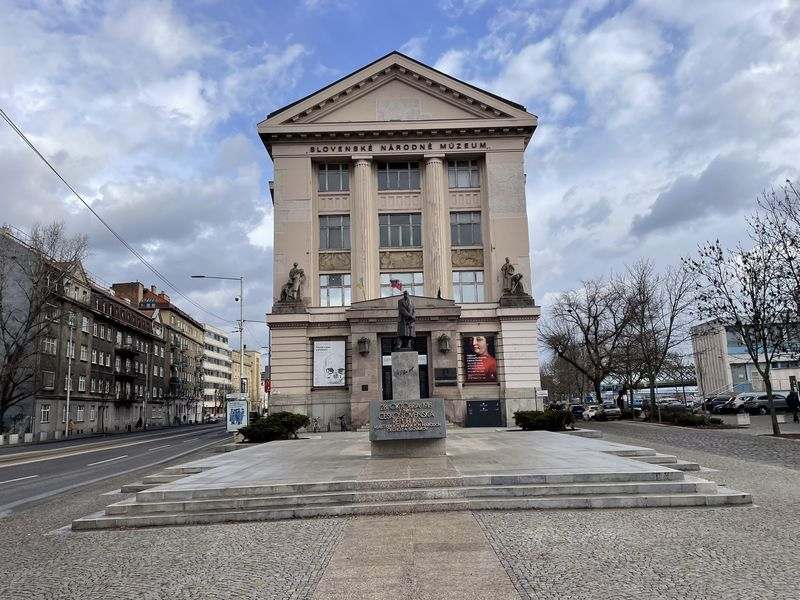
Vojnovy pamatnik Slavin
Imposing and full of historical memories, Slavin is a giant funerary monument at the foot of the small Carpathians. It was built between 1957 and 1960, but was officially unveiled on the occasion of the 15th anniversary of the liberation of the city by the Soviet Army on April 4, 1960. It consists of a tall obelisk with the statue of a soldier on top of it and from the graves of 6,845 soldiers of the Soviet Army, who were killed there during the liberation of Bratislava at the end of World War II. At the base of the pillar, the inscriptions, a symbolic sarcophagus of white marble and large staircases are surrounded by sculptures of famous Slovak artists added to the area. To get there you need a footpath on an uphill road, but the breathtaking view of the whole city will compensate you.
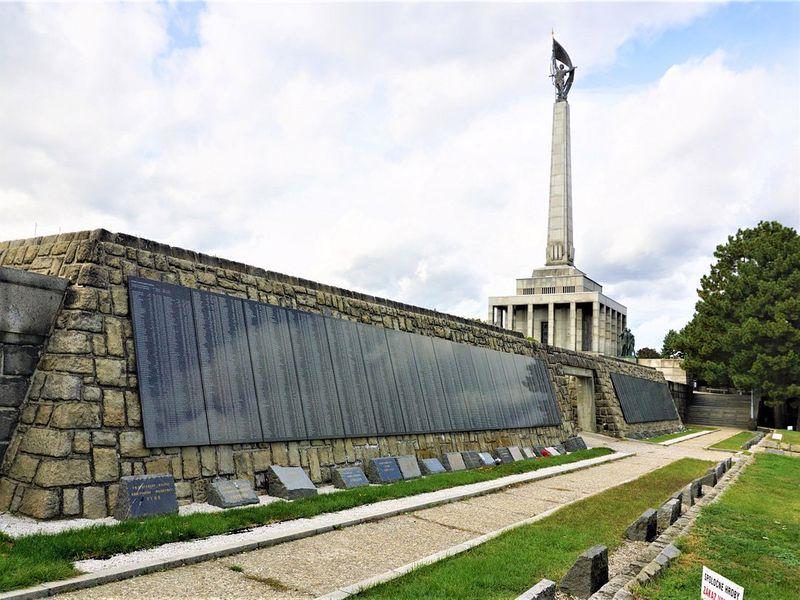
Budova Slovenskeho rozhlasu
The Slovak Radio building (Budova Slovenskeho rozhlasu) is one of the most "special" buildings in the city, since it has the form of an upturned pyramid. It was even included in a list of the 30 ugliest buildings in the world (!), but the Slovaks do not seem to share this view particularly. The project was started in 1967 and completed in 1983, by architects Stefan Svetko, Stefan Durkovic and Barnabas Kissling. It is 80 meters high and has an enormous concert hall, 522 seats, with a large organ. The first test broadcast took place in 1984, and a year later, on March 27, 1985, the regular broadcast was on the air.Tourists may not be allowed in, but it's definitely worth seeing even from the outside.
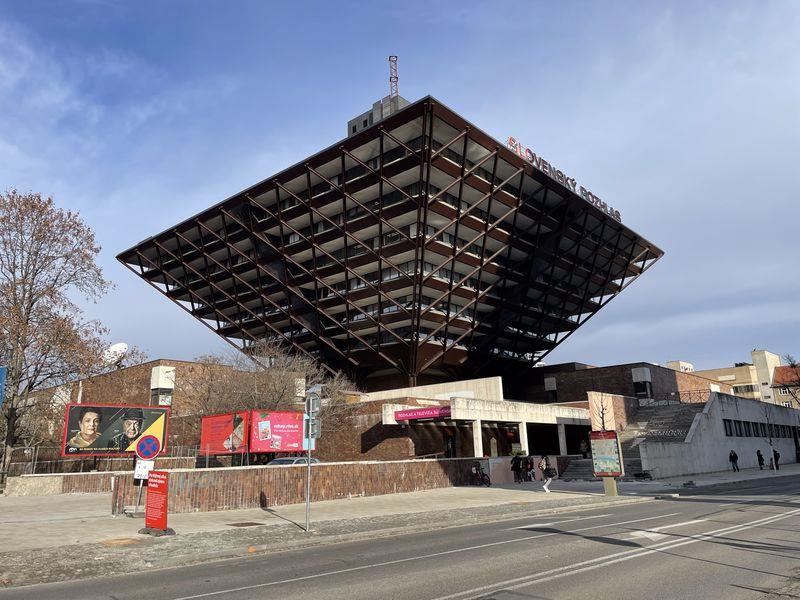
Prezidentský palác
Grasalkovic Palace was built in 1760 for the president of the Hungarian Royal Chamber and adviser to Empress Maria Theresa, Count Anton Grasalkovic. This luxurious palace was often used for aristocratic events, while today it is the official residence of the President of the Slovak Republic! Behind the Presidential Palace (Prezidentský palác) in Hodzovo Square (Hodžovo námestie) is a beautiful park, which was originally the palace gardens. There you will find a statue of Empress Maria Theresa on horseback, the Fountain of Youth and avant-garde statues by contemporary artists.
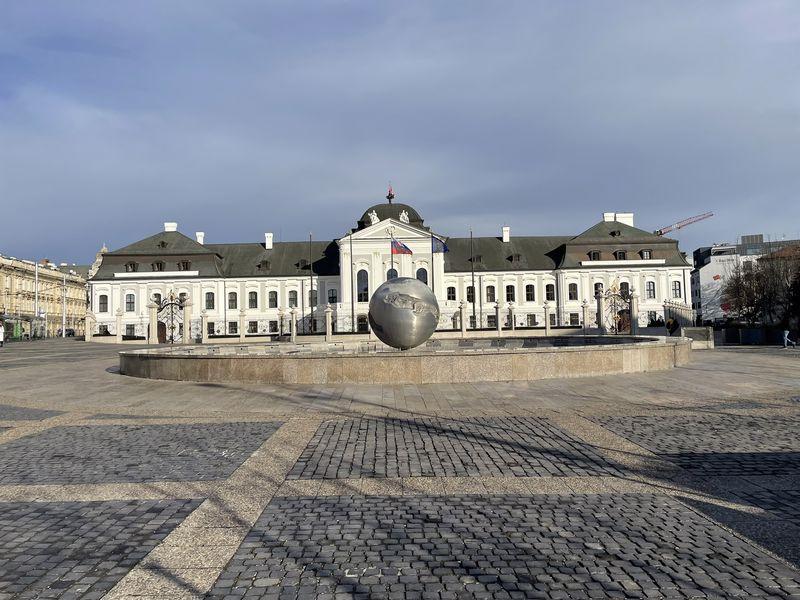
Devinsky hrad
Less than half an hour from the center of Bratislava, in the Devín region, there is another fortress, the Devín Castle (Devínsky hrad). The original building dates from the Neolithic era and is fortified from the Bronze and Iron Ages, and later from the Celts and Romans. Its location was and is strategic, as it stands at the confluence of the Danube and Morava rivers. The walls, the stairs, the open courtyards and the gardens of a ruined but once stately fortress are at the point where the Iron Curtain separated East and West, until the Velvet Revolution of 1989, which brought the fall of communism to Czechoslovakia. The castle can be visited daily except Monday, until 17.00 in the afternoon and the entrance costs 3e.
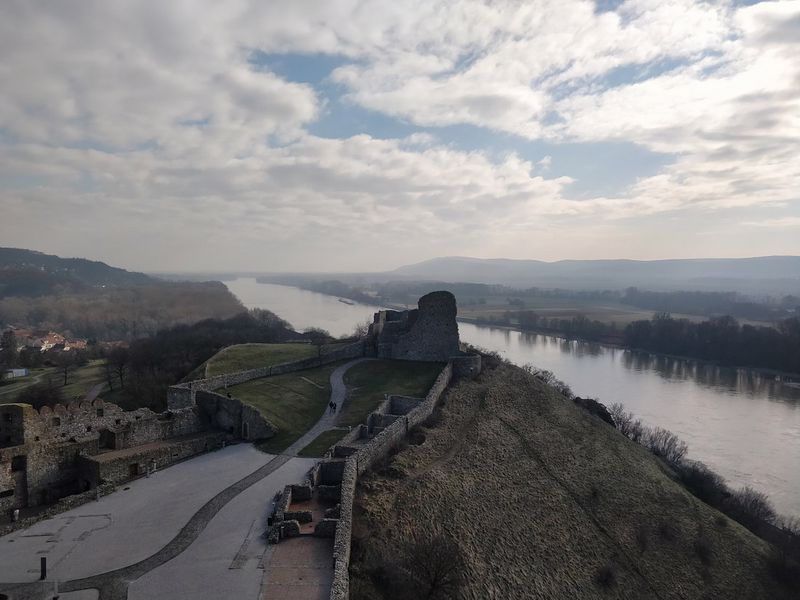
Bratislavsky lesny park
Bratislavsky lesny is a forest park (in fact a whole forest), located at the foot of the small Carpathians. It spreads over an area of 27.3 km2, of which 96% (!) is covered by forests, while the rest consists of meadows, water and residential areas. From there begins the river Vydrica, which gives this particular beauty to the region. The place is ideal for hikes and walks, as there is a dense network of trails, roads and entertainment facilities, and includes many sites popular among visitors, such as Zelezna studienka, Partizanska luka, Koliba and kamzik TV tower.
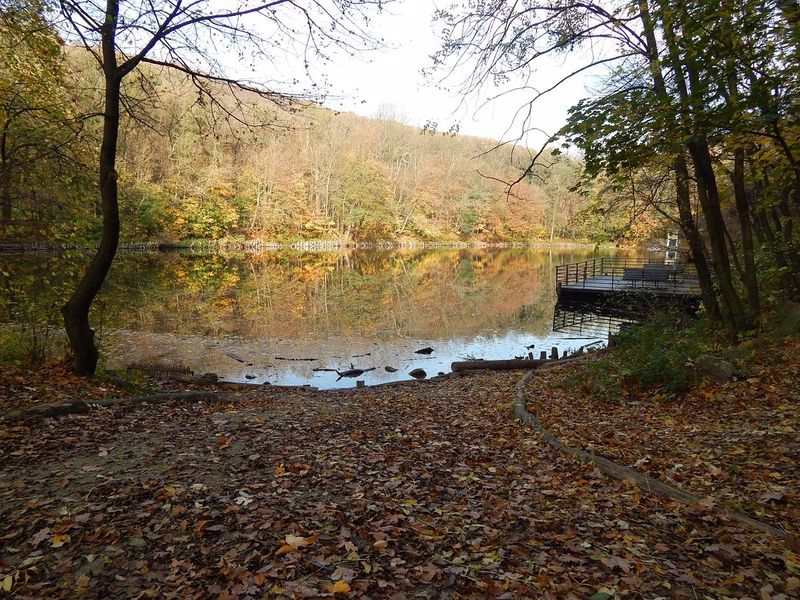
How to go
Thessaloniki is connected by air with Bratislava and Letisko M. airport. R. Stefanika, via Ryanair. With proper planning one can find tickets starting from 38€ round trip! Plus, you can reach it by train or bus if you are in Vienna, as the distance is about an hour and you may find some good chance at tickets to the Austrian capital.
Where to stay
Bratislava is a small city in size, but there is enough accommodation and relatively cheaper than other central European cities. I would suggest looking for something in the old town or just outside it, where the heart of Bratislava beats. So my suggestion is the Downtown Bratislava B&B, which is near the Grasalkovic Palace and has beautiful and fully equipped spacious rooms.
How to move
Bratislava is a small town; most of its attractions are located in its historical center and can be reached on foot. However, in the city there is an excellent public transport system with trams, trolleybuses and buses, which will take you wherever you wish. Tickets are single for all media and come out by categories (time duration or days). Finally, as far as taxi services are concerned, they are relatively cheap, but you will have communication problems, since most taxi drivers are old and do not know English. However, the Bolt application works in the city, which will save you from any kind of misunderstanding.
What to eat
Slovak cuisine is one of what we call "heavy" cuisines, with influences from German and Austrian, and includes a lot of meat, a lot of garlic, soups and lots and lots of frying. If you want to taste local flavors at very affordable prices, you should visit Divny Janko and definitely try schnitzel and mushroom soup. If, on the other hand, you wish to eat one of the best burgers of your life, then do not miss Jumb Street-Restaurant & Bar. Beyond that, what Bratislava is famous for is, of course, its chocolates. The best I've tasted in my life, I tasted it at Mondieu, which you can find almost everywhere in the city, since there are four branches. Also, for breakfast or brunch I have to recommend Pan Cakes - Creperie, which offers plenty of delicious options. Finally, don't forget to drink from the local draft beers (Urpiner, Stein and Chotebor), which are excellent and affordable, but also some of their wines, since they have a huge variety.
Useful information

In Bratislava we travel with a passport or a new type of Police ID, where the details are indicated in Latin characters.
In Bratislava the language used is Slovak. But the majority (especially young people), speak English (and German), so ask for clarification in English.
The currency of the country is the euro.
Bratislava is an hour behind Greece (GMT +2).
Getting to and from Bratislava airport is simple, since a bus on line 61 will take you to and from the city centre in 20 minutes.
The Greek Embassy in Bratislava is located at 4 Hlavne Namestie Street (on the main square) and its phone is +4212 54434143.
If you have time, do not miss a day trip to neighboring Vienna. By taking a train or bus, you will be in the capital of Austria in just over an hour.
The best time to visit the city is the end of spring and the beginning of summer or autumn. Due to the Danube River, there is plenty of moisture, and the weather is often rainy, and you will have the opportunity to admire the plenty of greenery of the city and the colors of autumn that make it very beautiful.
Recommended excursions → Vienna, Budapest, Prague

If this article seemed interesting or contributed to your quality information, then you can like my facebook page: o_thessalonikios or follow me on instagram!
Mouzakidis Pantelis





